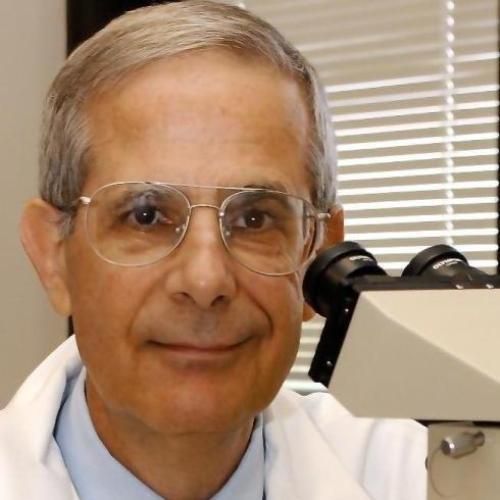Comparison of in vitro and in vivo differentiation of myeloblastic leukemia of the RFM/Un mouse.
Various human and mouse myeloid leukemia cell lines can differentiate to mature myeloid or monocytoid cells in response to different agents. The myeloblastic leukemia of the RFM/Un mouse (the RF.AML line) was studied here to determine its ability to differentiate after in vitro and in vivo treatment. The RF.AML cells were passed in vivo by i.v. or i.p. injection of freshly harvested leukemic spleen cells or in vitro-passaged leukemia cells. The cells proliferated in the spleen and peritoneal cavity. The RF.AML cells had the appearance of myeloblasts or myelomonoblasts on Wright's stain, had slight positivity for peroxidase, and lacked staining for nonspecific esterase. The cells grew in suspension in vitro with a doubling time of 48 hr. Various phorbol diester tumor promotors inhibited proliferation and incorporation of thymidine into the RF.AML cells. Phorbol myristate acetate (10 to 100 nM) caused the cells to adhere to plastic, and enhanced the phagocytic ability of the cells for Candida albicans. The RF.AML cells had specific receptors for phorbol dibutyrate, binding 0.37 +/- 0.03 (S.E.) pmol of [3H]phorbol dibutyrate/10(6) cells after a 2-hr incubation at 4 degrees with 50 nM [3H]phorbol dibutyrate. Thirty-three to 300 nM dexamethasone caused 19 to 37% of the cells to become nonspecific esterase positive and enhanced their phagocytosis of C. albicans. Likewise, 0.5 or 1.0 microM 13-cis-retinoic acid, or 0.6 or 1.2% dimethyl sulfoxide enhanced the phagocytic ability of the RF.AML cells but had no effect on the adherence, proliferation, or nonspecific esterase activity. None of the treatments induced lysozyme activity in the cells or rendered the RF.AML cells able to produce H2O2 in response to phorbol myristate acetate treatment in vitro. In vivo treatment of mice with RF.AML present with phorbol myristate acetate or dexamethasone did not induce differentiation of the RF.AML cells or alter the survival of the animals. Thus, although the RF.AML cells differentiate in vitro in response to various agents, in vivo differentiation was not seen in this model.
Duke Scholars
Published In
ISSN
Publication Date
Volume
Issue
Start / End Page
Location
Related Subject Headings
- Tretinoin
- Tetradecanoylphorbol Acetate
- Receptors, Immunologic
- Receptors, Drug
- Protein Kinase C
- Phorbol Esters
- Oncology & Carcinogenesis
- Muramidase
- Mice, Inbred Strains
- Mice
Citation
Published In
ISSN
Publication Date
Volume
Issue
Start / End Page
Location
Related Subject Headings
- Tretinoin
- Tetradecanoylphorbol Acetate
- Receptors, Immunologic
- Receptors, Drug
- Protein Kinase C
- Phorbol Esters
- Oncology & Carcinogenesis
- Muramidase
- Mice, Inbred Strains
- Mice

